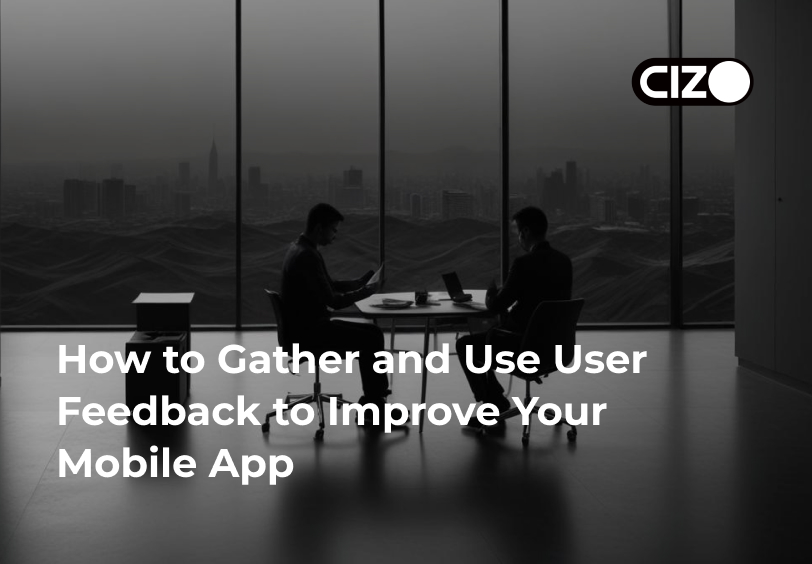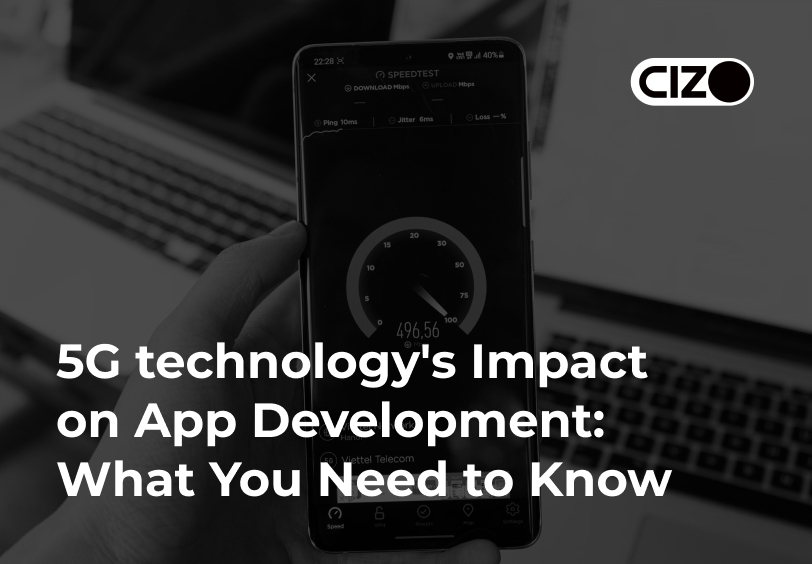 7th February 2024
7th February 2024
Launch Like a Pro: A Blueprint for a Smooth and Successful App Release
Find out why it’s crucial to follow the best methods before launching an app, and explore some strategies that can lead to success.
In this blog, we’ll cover key areas like why app launches are important, the challenges you might face, and how to tackle them head-on. So, buckle up and get ready for some valuable insights that will set you up for success!
First impressions matter, and that’s true whether you’re meeting someone new or launching an app. When your app goes live, it’s the beginning of turning all the hard work your team put in into something valuable. That’s why it’s important to plan, focus, and pay attention during this crucial time.
We only collect information for business use as detailed in our Privacy Policy
By understanding the best practices and steps for a successful app launch, you can improve your chances of making a great first impression. This is your chance to introduce your new product to your users for the first time, and the initial feedback can shape its future success.
Before we dive into the specific steps of launching your app, let’s take a moment to appreciate why this moment is so significant and why it’s worth preparing for.
Why is a Successful App Launch So Important?
An app begins as an idea. Nowadays, companies use apps to offer specific features to specific groups of people. For example, it might be a way to shop online, an app for employees to chat, or the dashboard for a new car or a photography app with a brand.
Once you know what your app will do and who will use it, it’s time to plan how to attract users. The long-term success of a website or mobile app depends on having lots of users who are interested. So, getting a big group of active users should be your main goal before and during the launch.
If an app doesn’t have many users, even if it’s great or looks nice, it won’t make money. It’s easier to get users interested when your app launches with lots of features right from the start.
But if your app doesn’t have enough features or if the features aren’t tested properly, it might not get many users after the initial downloads. People who use apps a lot nowadays have high expectations. If your app doesn’t meet those expectations, they might not give it a second chance.
Pre-Launch Preparation
Before your app goes live, there are several important things to consider to make sure everything runs smoothly.
App Quality & Stability:
Before launching your app, it’s important to make sure it works well and won’t crash. Here’s what you need to do:
Testing strategies for different devices and OS versions: Make sure your app works on all kinds of phones and tablets, and on different versions of Android and iOS.
Performance optimization and bug fixing: Check your app to make sure it runs smoothly and doesn’t freeze or lag. Fix any problems you find.
Security considerations and penetration testing: Make sure your app is safe for people to use and their data won’t get stolen. Test your app to see if hackers can break into it.
Version control and rollback plan: Keep track of all the changes you make to your app and have a plan in case something goes wrong. That way, you can go back to an older version if you need to.
App Store Optimization (ASO):
App Store Optimization (ASO) means making your app look good in the app store so people will want to download it. Here’s what you need to do:
- Choose a good title that tells people what your app does.
- Pick keywords that people might use to search for your app.
- Write descriptions that explain why your app is great.
- Make screenshots and videos that show off your app’s best features.
- If you want people in other countries to use your app, you might need to translate it into different languages.
- Test different versions of your app store listing to see which one gets more downloads. This is called A/B testing.
Launch Infrastructure:
Before launching your app, it’s crucial to make sure your technical setup is strong. Here’s what you need to focus on:
- Server Scalability and Load Testing: Your servers need to handle a lot of users at once without crashing. It’s like making sure a road can handle lots of cars without causing a traffic jam. So, you test your servers to see if they can handle a big load of users all at once.
- Data Backup and Disaster Recovery Plan: Imagine your app is like a house, and all the data inside is your valuable stuff. You need to have a plan in case something bad happens, like a fire or a flood. So, you back up your data regularly and have a plan to recover it if something goes wrong.
- Monitoring and Analytics Setup: It’s like having security cameras in your house. You want to keep an eye on who’s coming in and out and how they’re using your app. So, you set up tools to monitor the activity in your app and collect data on how people are using it. This helps you understand what’s working well and what needs improvement.
- Continuous Integration and Deployment (CI/CD) Pipeline: This is like having a smooth conveyor belt in a factory. You want to make sure that every change you make to your app gets tested and delivered to users quickly and without errors. So, you set up a system that automatically tests and deploys new updates to your app, so users always have the latest and greatest version.
The Launch Day Experience
A. Smooth Rollout & User Onboarding:
Launching your app smoothly means making sure it doesn’t crash when too many people try to use it at once. One way to do this is by rolling it out in stages, like letting some people use it first and then gradually letting more people in. This helps manage the load on the servers, which are like the brains behind the app.
When people first download your app, it’s important to make it easy for them to figure out how to use it. This is called onboarding. Think of it like a tour guide showing you around a new city. You want clear instructions and helpful tips to get started.
Once your app is out there, people might find problems or have questions. It’s important to listen to them and fix any issues quickly. They might report bugs, which are like little problems with the app. By addressing these early on, you can make sure people have a good experience from the start.
B. Community Engagement & Hype:
Getting people excited about your app is key to a successful launch. You can do this by using social media, like Facebook or Instagram, to tell people about it. You can also reach out to popular people online, called influencers, and ask them to share your app with their followers. This can create a lot of buzz around your app.
When people start using your app, they might have questions or leave reviews. It’s important to respond to them quickly and politely. This shows that you care about their experience and are willing to help them out.
To make your launch even more exciting, you can run contests or offer special promotions. This gives people an extra reason to check out your app and can help spread the word even further.
Post-Launch Optimization & Growth
A. App Analytics & Performance Tracking:
After your app is launched, it’s important to keep an eye on how it’s doing. This means looking at key user numbers and watching what people do in your app.
You can try out different things in your app to see what people like best. This might mean changing how things look or work a little bit and seeing if more people use your app because of it.
If your app crashes or doesn’t work right for some people, you need to know about it. That way, you can fix the problems and make your app better.
B. Ongoing User Engagement & Retention:
Once your app is out there, you want to make sure people keep using it. You can do this by adding new stuff to your app, like new features or fixing any problems that pop up.
Sometimes, it’s a good idea to send messages to people who have your app installed. This could be to let them know about something new or just to say hi.
You might also want to start a club or program for people who use your app a lot. This way, they feel special and might tell their friends about your app.
C. App Store Reviews & Feedback Management:
People who use your app can leave reviews in the app store. It’s a good idea to ask people to leave nice reviews if they like your app. If someone says something bad about your app, try to find out why and see if you can fix it.
If someone leaves a review, it’s polite to say something back. This shows that you care about what people think. You can also learn from what people say in their reviews and use it to make your app better.
In conclusion, the success of an app launch hinges on careful planning and thorough preparation. Understanding the target audience and their needs, as well as ensuring the app offers a comprehensive feature set, are vital for attracting and retaining users. Without a solid user base, even the most well-designed app may struggle to make an impact.
It’s essential for developers to invest time and effort into pre-launch strategies, including market research, user testing, and quality assurance. By prioritizing these steps, developers can increase the likelihood of a successful app launch and long-term user engagement.
For those looking to delve deeper into app development and launch strategies, there are numerous resources and tools available. From online courses and tutorials to developer forums and community support, developers can leverage a wealth of knowledge and expertise to enhance their app launch efforts.
In closing, I encourage readers to share their own app launch experiences and insights. By exchanging ideas and learning from one another, we can collectively improve our app launch strategies and contribute to the success of the mobile app developers. Together, let’s strive for excellence in mobile app development services and launch endeavors.
A PROJECT WITH CIZO?











 hello@cizotech.com
hello@cizotech.com +91 79907 01039
+91 79907 01039 


